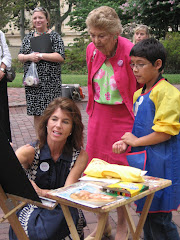The Curtis Institute of Music in Philadelphia, Pennsylvania is one of the most prestigious music institutions in the country. At the most, the student body consists of two hundred pupils, enough to fill an orchestra, all with merit scholarships.
It was at this well-respected establishment in the late 1930s, a decade after the institution opened, where composition student Samuel Barber and violinist Iso Briselli collaborated to create what would become Barber’s Violin Concerto. The Fairfax Symphony looks forward to performing this work again on January 23, 2010, on the 29th anniversary of Barber’s death, with world-renowned violinist Augustin Hadelich.
Both Barber and Briselli exhibited musical talents from a young age, although their backgrounds were vastly different. Barber was a Pennsylvania native from West Chester and Briselli immigrated was a Russian immigrant. A fellow Curtis student, Gama Gilbert, recognized the incredible talents of Barber and Briselli, and convinced them to work together to create a concerto for violin and orchestra.
The two friends decided it would be an interesting and challenging task. Samuel Fels, a businessman and philanthropist, commissioned the work, offering Barber $1000.
Barber would compose the piece one movement at a time, and Briselli would realize it on violin, influencing the composition with his performance style. Barber finished the first two movements for Briselli, but trouble began to arise once he presented the third movement. Sources dispute the exact problem revolving around this movement. Was the piece lacking in Briselli’s standards or did he find the piece to be too challenging?
Either way, Briselli was unsatisfied with Barber’s work. Fels and Briselli both tried to persuade Barber to alter the third movement to make it more “playable,” but by that time, Barber was tired of their complaints. He was pleased with his arrangements, and he was also busy with other commissions. Barber left the Violin Concerto as it was, even when Fels threatened to take back his $1000 payment.
Barber neither let this dispute discourage him nor let it dissuade him from finding a way to present his composition to the world. He held onto his work, and that same year, in 1939, he found a violinist competent and able to play the concerto. Herbert Baumel helped Barber bring life to the work. He premiered and performed the piece during multiple live performances that year.
For more information on the Fairfax Symphony’s performance of Barber’s Violin Concerto and to purchase tickets, click here.
.jpg)
.jpg)
.jpg)
1 comments:
Nice brief and this fill someone in on helped me alot in my college assignement. Thank you as your information.
Post a Comment